Waterfall Project Management Methodology: A Complete Guide
Looking for a straightforward approach to project management? The waterfall method might be perfect for your next project.
There are so many project management approaches out there, so choosing one for your next project might seem tough. Fortunately, there’s a simple project management approach you can use pretty much any time. The waterfall project management methodology is all about taking one step at a time until your project has reached its end goal. In this article, you’ll learn all about the waterfall method and how it can best serve your team.
- What is waterfall project management?
- 5 stages in a waterfall process
- Benefits of the waterfall method
- Disadvantages of the waterfall method
- Who can benefit from using the waterfall method?
What is waterfall project management?
Waterfall project management, also known as the waterfall model, is a super straightforward approach to managing a project. With this approach, a team works through a project sequentially. Sounds fancy? Well, it’s not. It just means not starting on the next phase until your team has finished the current one. If your team needs to make changes to a previous phase, they can’t do so unless they start the project anew from the beginning.

Level up your management skills
Level up your management skills by increasing meeting engagement and productivity with a collaborative agenda that the whole team can contribute to. Try using a tool like Fellow!

5 stages in a waterfall process
The waterfall model is simple and linear thanks to its five phases. This flow can keep a project moving in the right direction and efficiently take it from start to finish. Below are the five stages of the waterfall model and how you can move through them seamlessly.
1Requirements
The first stage of the waterfall model is basically the planning step. Here, you’ll plan out every phase of the project, and that’s a big deal. After all, in the waterfall model, every part of the project depends on how well your team executed the previous step. A major component of this stage is the project plan.
Your project plan is a requirements document that clearly lays out your timeline, tasks, budget, and potential roadblocks. It should also set the expectation for your team members to record the entire process. This way, everyone knows exactly what’s going on and where they need to make any changes if a phase goes off-course.
2Design
Based on the requirements you set for your project, you can now proceed to the system design (or, when relevant, software development) phase. In this phase, you and your team will decide which project management software you’ll use. You’ll also choose the hardware and, if applicable, programming tools that will support the project.
3Implementation
You’ve made a clear plan for how you’ll handle the project – now, it’s time to get to work. In the implementation stage, you and your team will take the steps you laid out in the previous stage. Let’s use software development as an example here. In this case, your programmers will start the coding process using all the plans and requirements you’ve put in place. They’ll work piece by piece to be sure they’re coding everything the right way.
4Testing
Now, the project goes on to your quality assurance team. These testers will carefully comb through everything to make sure there are no errors. They’ll also check to make sure your project fulfills all of your phase one requirements. If not, then it might be back to the drawing board for you and your team.
5Deployment and review
In this stage, your team will tie up any loose ends and send out the completed product. From there, a review team will go over the product and see how the people using it are feeling. That’s how they’ll identify any necessary updates or changes. As this happens, you’ll also review the entire process. That includes everything from your team’s performance to the overall project, budget, and completed goals.
Benefits of the waterfall method
Maybe you’ve already realized that the waterfall method can make everything about project management easier. It has many other benefits too, such as the ones listed below.
- An accurate timeline with clear deadlines
- Early identification of design errors
- Detailed budget estimates
- Easy progress measurements
- Easy training
- Simple project management
1An accurate timeline with clear deadlines
Creating a detailed timeline during the requirements phase of the waterfall model shows you how your project should progress. With this clear timeline, there’s no question about what your team should have done already and what they have ahead of them. For example, if a project is due in September, you’ll know exactly how far along your team members should be in May. Based on that timeline, you can see whether your team is ahead of schedule or falling behind. You can then figure out how to better use their time.
2Early identification of design errors
In the system design phase, your team gets rid of any potential future issues that could cause problems down the line. Identifying these problems before starting on the actual project can give everyone the chance to change things before it’s too late.
3Detailed budget estimates
A lack of funding is one of the most common causes of failed projects. Adding to that, a McKinsey and University of Oxford study found that large IT projects run, on average, 45 percent over budget. Creating an accurate budget can be much easier with the waterfall project management methodology.
Ask yourself: Are there any stages that might require certain team members to work overtime? What project management software will you use? In the waterfall method’s detailed planning stage, you’ll lay out each of these elements so you can budget for payroll, software, and other expenses.
4Easy progress measurements
Based on the requirements you set, you can define project milestones for your team to accomplish. This way, you can easily track your team’s progress. Your team members can refer to these milestones to check their progress and see how their results are lining up with their goals. With the waterfall method, there’s no question about how close a project is to completion.
5Easy training
With the waterfall method, there’s no need for hands-on, time-consuming training meetings if a team member becomes unavailable. Their replacement can jump right in where they left off since the previous team member has recorded every step they’ve taken. The new team member can just look at all that instead of training with you. No more pausing the project to get new team members up to speed.
6Simple project management
The waterfall method is one of the simplest project management methodologies. It’s like having a map for your project laid out in the beginning. Your whole team will know where things should be headed next and how quickly they should be moving along. You don’t have to oversee different team members working on different phases of a project all at once. Instead, everyone works on one part of the project at a time. Once that part is complete, then everyone moves on to the next phase. It can really be that simple.
Disadvantages of the waterfall method
While the waterfall method can bring several benefits to your projects, there are a few drawbacks to consider before diving in headfirst. Below are some of the disadvantages of using the waterfall methodology.
- There is less flexibility down the line
- The delivery time is longer
- Change can be hard to fit in
- Clients don’t have a say in the design phase
- One missed deadline delays the whole project
1There is less flexibility down the line
With the waterfall method, once you get started, there’s no going back – at least not without taking it all the way back to square one. That means your team will need to follow the plan exactly, even later on when more variables could be introduced. A change your team members only realize they need to make once they reach the testing phase could disrupt everything and require a restart.
2The delivery time is longer
In the waterfall method, your team must complete one phase before moving on to the next one. While this is a straightforward process, it prevents your team from taking a “divide and conquer” approach. Some team members might get stuck waiting for others to complete their tasks, which isn’t the best use of time. That can cause a project to take longer to complete than it would otherwise.
3Change can be hard to fit in
Unexpected situations happen all the time – structuring an entire project on the idea of things running smoothly from start to finish might be wishful thinking. The waterfall method doesn’t support making a change if an unexpected issue arises or there’s anything you need to tweak down the road. If something pops up, you might have to backtrack to the beginning of the project.
4Clients don’t have a say in the design phase
The waterfall approach is a bit different from an approach like agile project management, which involves clients in every step of the process. With waterfall project management, once the requirements are set, there’s no room for making changes. That means a client can’t later share additional ideas that weren’t part of the initial design. The plans are fixed, so clients can’t easily give feedback on whether the team is meeting their vision.
5One missed deadline delays the whole project
Since progress with the waterfall method is sequential, if your team misses a deadline during any part of the project, the rest gets pushed back. For example, if the design phase runs longer than expected, the implementation phase starts later than planned. The result is a domino effect that can delay the rest of the project.
Who can benefit from using the waterfall method?
After weighing the advantages and disadvantages of the waterfall method, many teams choose to use it. If your project sounds like any of the below, the waterfall method might be best for you and your team.
- Projects with clear requirements
- Projects with a defined scope
- Project with clients who are sure of what they want
1Projects with clear requirements
There’s no room for even an ounce of confusion when structuring your waterfall process for a project. That makes the waterfall project management methodology a good fit if you already have rock-solid timelines, budgets, and expectations. This way, you can enter the requirements phase with all the information you need to create a concise project plan to share with your team.
2Projects with a defined scope
Knowing your project’s scope from the start can help you get all the resources you need to seamlessly proceed from one phase to another. If you have a clear picture of your project’s end goal, the waterfall method can help you clear a path to the desired result.
3Project with clients who are sure of what they want
If a client approaches you with a clear vision of the product they want your team to create, you can consider the waterfall method. A client who knows exactly what they’re looking for from the beginning will likely stick to their plan throughout the development process. That goes hand in hand with the waterfall project management methodology.
Finding your flow in project management
The waterfall methodology is about as direct as project management gets. It can be an easy way to get your project from the planning stage to a product that exceeds your clients’ expectations. With all the aspects of your project clearly laid out, holding regular meetings will be essential to making sure everything stays on track. And with Fellow, you can easily plan all your meetings to be just as straightforward as the project itself. Who knew project management could flow so smoothly?










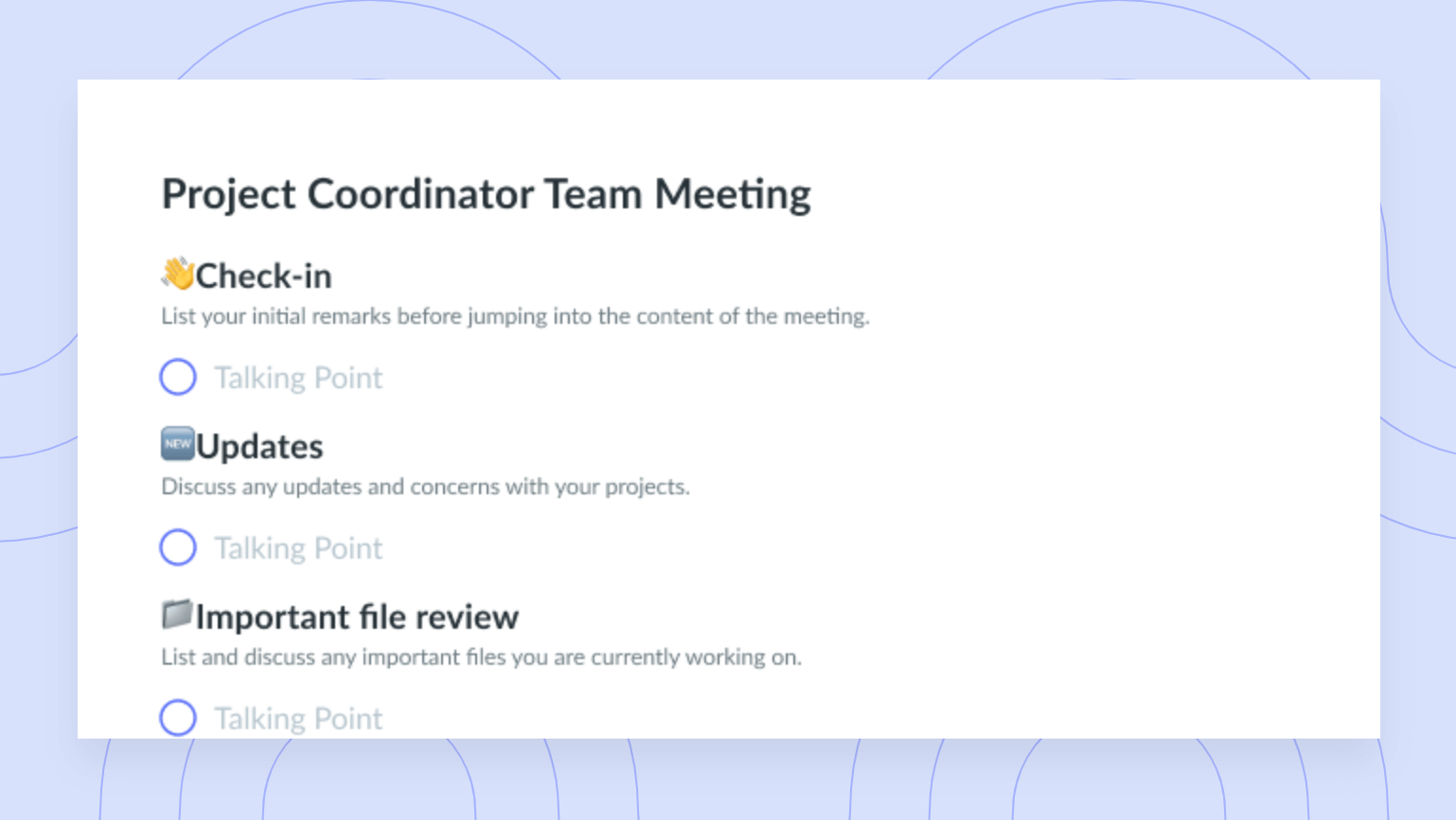
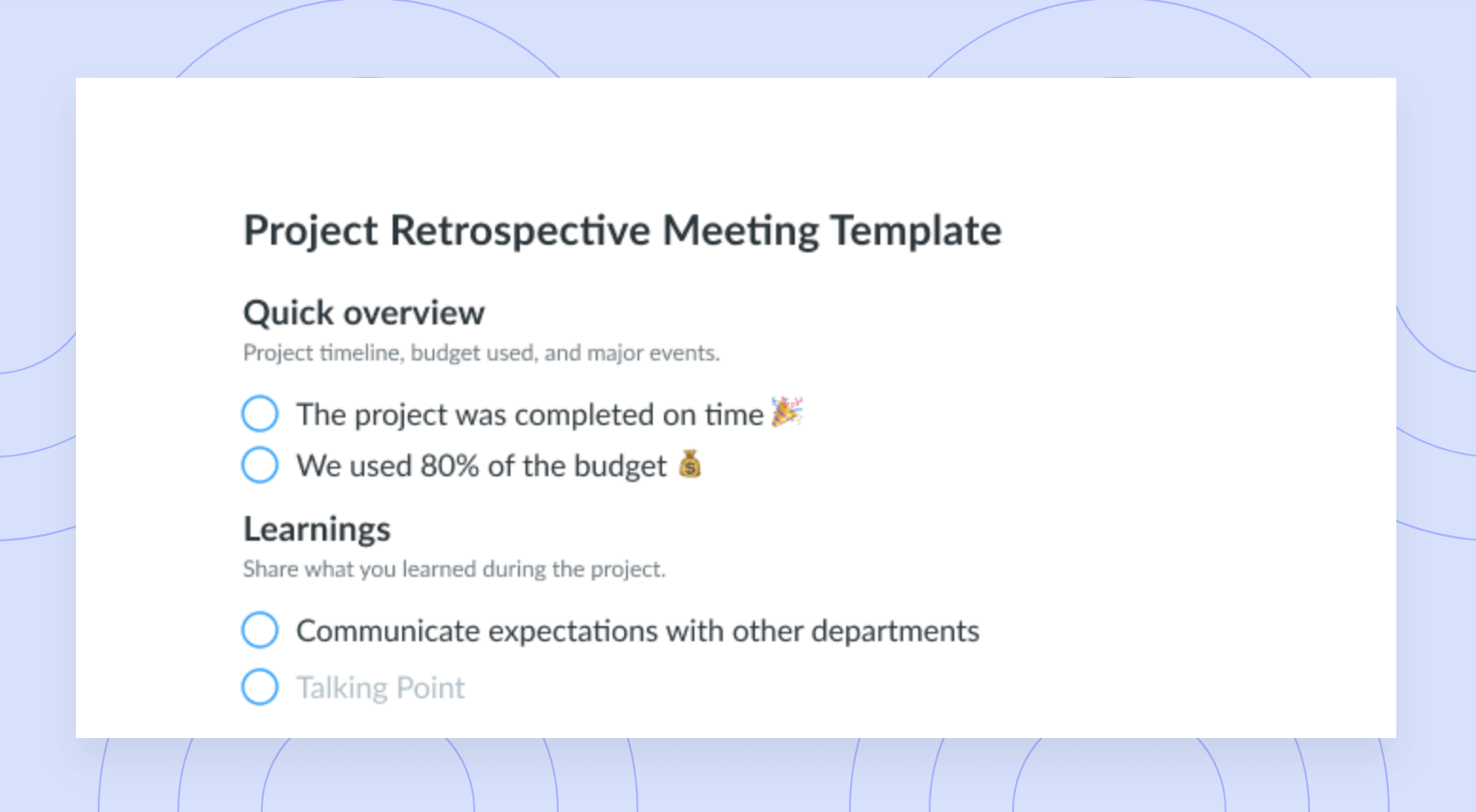
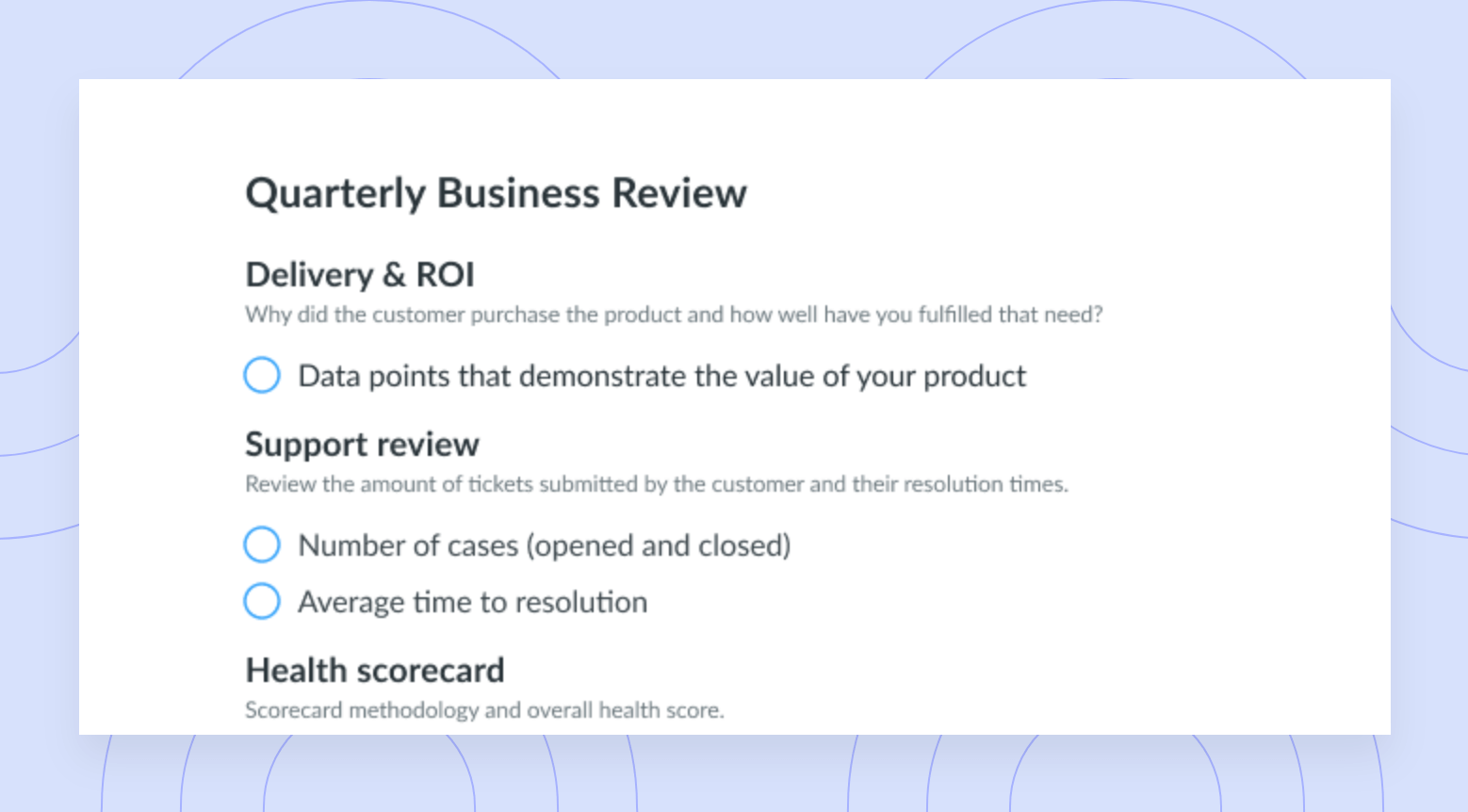
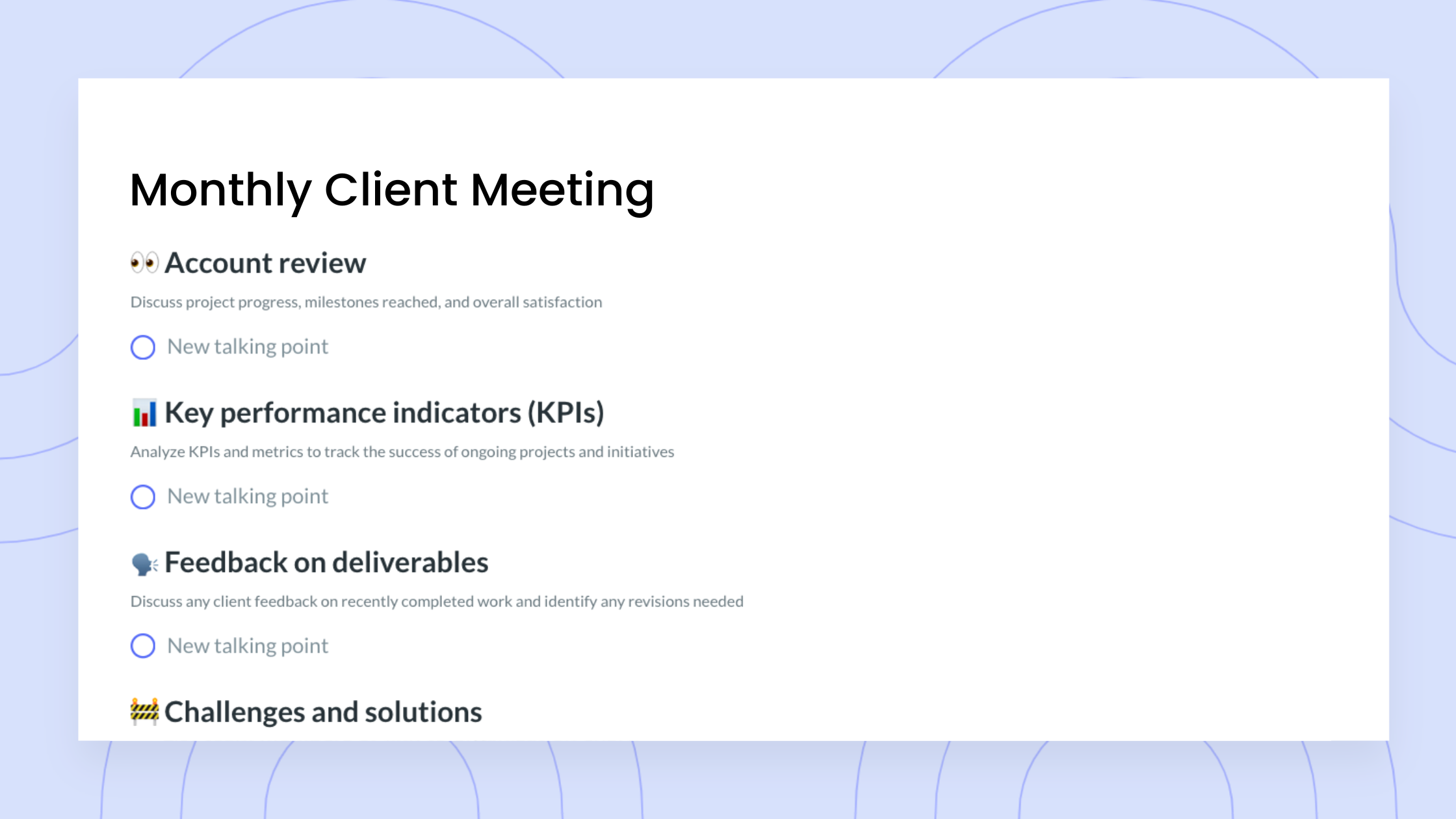
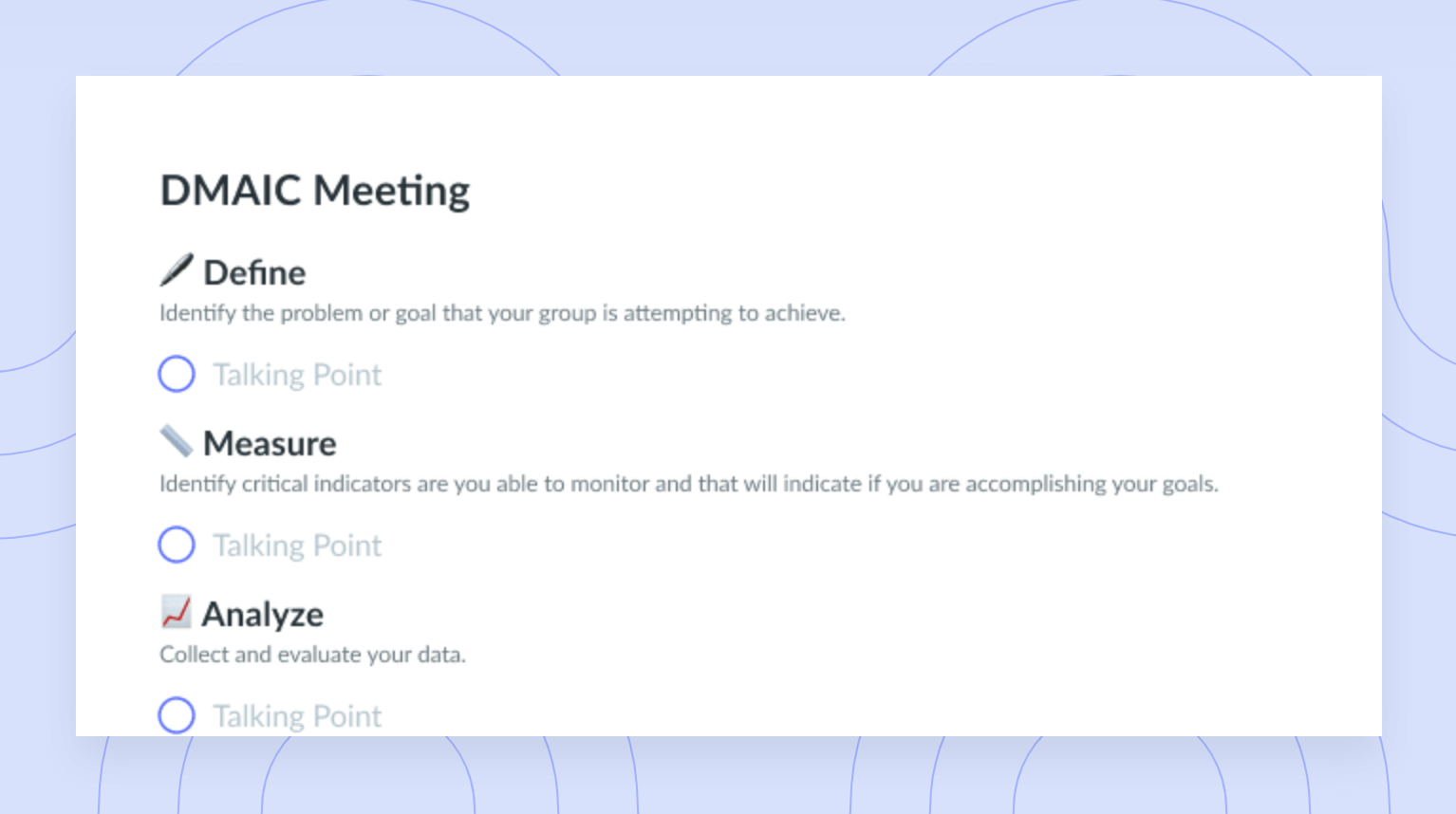
![Crisis Management Round Table [Daily Check-In] Template](https://fellow.app/wp-content/uploads/2021/09/Crisis-Management-Round-Table-Daily-Check-In-preview.png)











